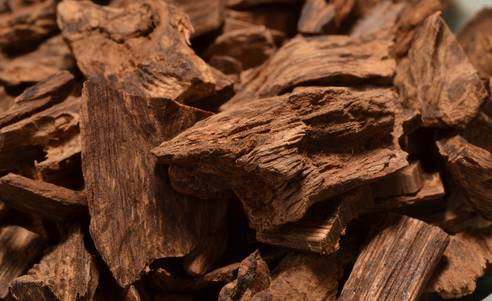
How to Evaluate Agarwood: A Guide to Grading, Pricing, and Collectibility
Agarwood, often called "liquid gold," is one of the world’s most precious natural materials. Revered for its rich aroma, spiritual significance, and rarity, it has been prized for millennia in perfumery, traditional medicine, and religious rituals. However, its value varies dramatically based on quality, origin, and age. This guide explains how to assess agarwood’s grade, understand its pricing, and evaluate its potential as a collectible.
1. Understanding Agarwood: Formation and Types

Agarwood forms when Aquilaria trees produce resin in response to fungal infection or physical damage. This resin-saturated wood develops a complex, aromatic profile over decades. Key categories include:
- Natural Wild Agarwood: The rarest and most valuable, harvested from centuries-old trees in forests of Southeast Asia (Vietnam, Cambodia, Indonesia) and the Himalayas.
- Cultivated Agarwood: Farmed trees intentionally inoculated with fungi to induce resin production. Generally less potent than wild variants (International Journal of Wood Science, 2019).
- Kynam (Kinam): The highest grade, distinguished by its sweet, cooling scent and oily texture. Found only in specific regions like Vietnam and Hainan (China).
- Sinking vs. Floating Grades: High-resin agarwood sinks in water (“sinking grade”), while lower grades float (“floating grade”).
2. Grading Agarwood: Key Criteria
A. Aroma Profile
The scent complexity determines quality. Top-tier agarwood releases layered notes: sweet, earthy, floral, or medicinal, evolving when heated. Lower grades smell flat or smoky.
- First-Class: Kynam emits a long-lasting, cooling aroma.
- Second-Class: Rich, balanced scent with no harshness.
- Third-Class: Mild fragrance with minimal resin (Chen et al., 2017)

B. Resin Content and Density
Resin appears as dark streaks or patches. Higher resin content increases density and value:
- Sinking Grade: Fully saturated, sinks immediately.
- Half-Sinking: Partial resin, sinks slowly.
- Floating Grade: Low resin, remains buoyant.
C. Origin and Age
Wild agarwood from Vietnam’s Khanh Hoa province or Cambodia’s Cardamom Mountains commands premium prices. Older wood (50+ years) is denser and more aromatic.
D. Color and Texture
High-grade agarwood has a glossy, oily surface with deep brown or black hues. Dry, pale wood indicates inferior quality.

3. Price Factors: Why Agarwood Costs More Than Gold
Agarwood can cost **10,000–100,000 per kilogram**, depending on grade:
- Kynam: Up to $100,000/kg (Christie’s Auction Records, 2021).
- Wild Sinking Grade: 20,000–50,000/kg.
- Cultivated Grade: 1,000–5,000/kg.
Key Influencers:
- Scarcity: Wild Aquilaria trees are endangered; CITES restricts trade.
- Demand: Used in luxury perfumes (e.g., Oud-based fragrances), Traditional Chinese Medicine (TCM), and Buddhist/Hindu rituals.
- Size and Form: Whole logs or carved pieces are pricier than chips or powder.
4. Collectibility and Investment Potential
Agarwood’s value appreciates due to:
- Rarity: Wild stocks are depleted; sustainable harvesting is nearly impossible.
- Cultural Significance: Symbolizes purity in Buddhism and status in Middle Eastern cultures.
- Historical Value: Antique agarwood artifacts (e.g., Ming Dynasty carvings) fetch millions at auctions (Sotheby’s, 2020).

Tips for Collectors:
- Buy certified wood with provenance documents.
- Prioritize whole pieces over fragments.
- Store in airtight containers to preserve aroma.
5. How to Avoid Counterfeits
Fake agarwood (soaked in synthetic oils or dyed) is rampant. Red flags include:
- Overly Uniform Color: Natural resin patterns are irregular.
- Chemical Smell: Authentic agarwood never smells artificial.
- Low Price: True sinking-grade agarwood is never cheap.
Verification Methods:
- Heat Test: Genuine agarwood releases a complex scent when briefly heated.
- Lab Testing: Gas chromatography can identify synthetic additives (World Agarwood Organization, 2022).

Conclusion
Evaluating agarwood requires expertise in its aroma, texture, and origin. While premium grades are a luxury investment, their cultural and historical significance ensures enduring demand. For collectors, focusing on certified, wild-harvested pieces with documented provenance offers the safest path to acquiring this “wood of the gods.”
References
- Chen, H., et al. (2017). Chemical Analysis and Classification of Agarwood Resins. Journal of Essential Oil Research, 29(4), 324-331.
- CITES. (2023). Appendix II Listing of Aquilaria spp. cites.org.
- Christie’s. (2021). Rare Agarwood Auction Results. christies.com.
- International Journal of Wood Science. (2019). Agarwood Formation in Aquilaria Trees: Mechanisms and Influences. 45(3), 112-120.
- Sotheby’s. (2020). Asian Art Auction Catalog. sothebys.com.
- World Agarwood Organization. (2022). Standards for Agarwood Authentication. waof.org.